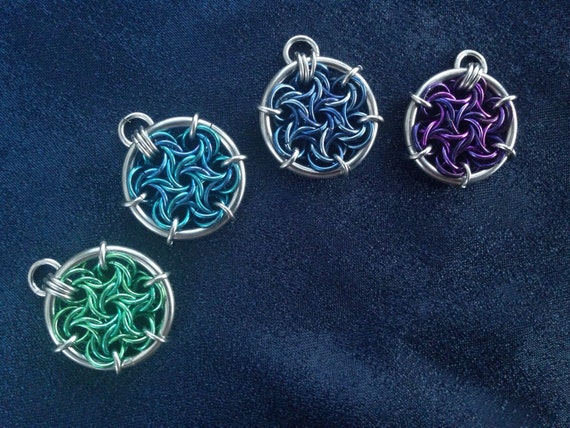Advanced? Well, all right. I guess some might consider that advanced, but it did surprise me. I always think of it as a beginner's weave.
Upon further questioning, I found out that she had them make their piece out of 20g wire, 1/8" internal diameter, or something along those lines.
Ok. That's just a bit difficult. Time consuming, even. But not advanced.
And this, dear Reader, leads me to my thought for today: the difference between simple and complex, easy and difficult.
Simple, in case you are unaware, means that there are very few steps involved. Complex means numerous steps.
Easy means that there is not a lot of energy involved in the making of the piece. Difficult means that a lot of energy is used, usually in terms of time and sweat.
When considering what weave to teach a group, it is important to keep these things in mind.
Byzantine is a simple weave. There are not a lot of steps involved. It is, essentially, 2 to 2 to 2, flip, split. That's it. If you're reading this blog, chances are that you know it is an easy weave.
Making it in tiny links doesn't make it a complex weave; it just makes it difficult.
1/2 Persian, for many, is a complex weave to begin, but simple to continue. It may be difficult to start, but is easy to finish. If you don't know the easy way to start it yet, just click on the video below:
When giving a beginner's course, you should probably consider something that is both simple and easy, allowing them the time to both learn the process, as well as finish the piece.
For an advanced course, I would select something that is complex, but not too difficult. One example of this would be a Moorish rose pendant. It is a complex piece to make, but relatively quick. Oh, and I would do it in aluminium, as that makes it easier to close those last links without too much forcing or invectives. Below is a beautiful example of this weave by Steampunk Garage, made in steel and niobium. If you don't want to make it yourself, theirs is well worth it.
Many of us confuse difficult with complex, and when we are teaching others, this confusion can lead to a lot of unnecessary frustration. But when we understand the difference, then our students are just the richer for it.
